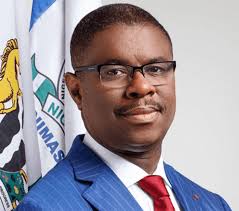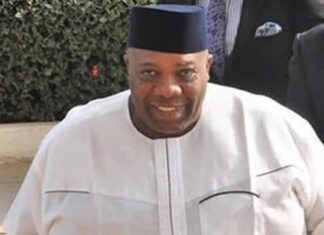By Dakuku Peterside
Conceived by former President Olusegun Obasanjo, in 2006, the blueprint of Vision 2020 was launched in September 2009 by late President Umaru Yar’Adua’s administration amidst fanfare. Vision 2020 was preceded by earlier development plans . Vision 2020 targeted that “Nigeria will be among the 20 largest economies of the world by 2020. By 2020, Nigeria will have a large, strong, diversified, sustainable and competitive economy that effectively harnesses the talents and energies of its people and responsibly exploits its natural endowments to guarantee a high standard of living and quality of life to its citizens.” Those who conceived Vision 2020 had envisaged that Nigerians would usher in the New Year 2020 as one of the 20 best economies in the world. We shall then beat our chests and celebrate one of the emerging economies in the world.
However, we are about to exit the Year 2020, and we have somehow fallen on the wayside on our journey to Vision 2020. Nigeria is far from being among the world’s top 20 economies in terms of Gross Domestic Product (GDP). According to the World Bank report, Nigeria is the 31st biggest economy in the world, and Nigerians are currently witnessing probably the worst socioeconomic conditions post-Civil War. The World Poverty Clock estimates that over 100 million Nigerians live in extreme poverty. It also notes that the figure increases every six minutes. The long-term plan seems not to have made the desired impact on Nigeria’s developmental challenges.
Some critics have questioned the targets in the development plan, noting that some of the indices were too ambitious. Some called it one-sided, insisting that the citizens did not buy into it. Others believed that its drafters failed to harmonise the vision with several other national plans running at the time. For instance, it was the perceived failure of Vision 2010 – launched in the 1990s under the military rule – that signalled the introduction of vision 2020. The crucial questions to ask are: why are we not getting it right? What blurs our vision in all the projected development plans of the past? Do we need another development plan for the future? Some have argued that official visioning hardly works in democracies ,because different parties and parliaments come into power and articulate their own vision and programmes.
That Nigeria has the potentials of growth is not in question. The country is hugely endowed with immense human and natural resources. However, reading the history of Nigeria is akin to a painful journey of misplaced priorities, missed targets, failed leadership, capricious avarice and shattered expectations. No matter the criticisms of the policy document, Vision 2020 was not derailed because there was no clarity in the language of the document, or the framers were not smart enough. It failed because ideas have never been in short supply in Nigeria, but implementation has always been the bane of our progress as a country.
One of the countries famed for turning their vision into reality is the United Arab Emirates, a country with similar historical trajectory like Nigeria. When you compare how these two oil-producing countries (Nigeria and UAE) fare today, you will realise the import of failed vision as against realised vision.In Nigeria, the average life expectancy is 60 years (59 years for men, 62 years for women) as of 2020. In the United Arab Emirates, that number is 79 years (78 years for men, 80 years for women) as of 2020. While in Nigeria, approximately 917.0 women per 100,000 births die during labour as of 2017. In the United Arab Emirates, 3.0 women per 100,000 births do as of 2017.
In Nigeria, approximately 59.8 children in every 100,000 die before they reach the age of one as of 2020. In the United Arab Emirates, on the other hand, 5.3 children in 100,000 do as of 2020. These statistics are staggering and encapsulate the dichotomy between two countries with similar beginning and potentials but are the almost perfect antithesis of each other in basic developmental strides. You will come to the conclusion that UAE have used oil revenue powered by enlightened vision to create an alternative post- fossil fuel economy.
Nigeria lags in the area of education to the UAE. In Nigeria, the literacy rate is 62.0% as of 2018. In the United Arab Emirates, it is 93.8% as of 2015 with projection of 99% in 2019. In Nigeria, approximately 59% of the population has access to electricity as of 2017. Even among the 59% almost 100% suffer from epileptic supplies. In the United Arab Emirates, 100% of the population have constant electric supply as of 2017.
In Nigeria, approximately 42.0% of the population has internet access as of 2018. Of these, 42% majority cannot afford to buy enough data for constant internet access. It is expected that the majority use their data miserly and often for entertainment purposes. In the United Arab Emirates, about 98.5% do have full access to the internet as of 2018.
In Nigeria, approximately 78% of people have improved drinking water access as of 2017. Many people out of this 78% do not have access to clean water. In the United Arab Emirates, a country with less access to natural sources of water than Nigeria, 100% of people have access to clean water as of 2017.
A comparison of the economic indices is more heart-wrenching for Nigeria and Nigerians. Nigeria has a GDP per capita of $5,900 as of 2017, while in the United Arab Emirates, the GDP per capita is $68,600 as of 2017. In Nigeria, 23.1% of adults are unemployed as of quarter one 2018 progressing to above 24% in 2019. In the United Arab Emirates, that number is 2.28% of the population as of 2018. In Nigeria, 40% of the population live below the poverty line as of 2019. In the United Arab Emirates, however, that number is 2.64 percent in 2019.
Conversely, Nigeria only fares better than the UAE in a population explosion due mainly to poverty, frustration and lack of birth control . In Nigeria, there are approximately 34.6 babies per 1,000 people as of 2020. In the United Arab Emirates, there are 9.5 babies per 1,000 people as of 2020.Youthful population is an advantage where people have skill , are motivated and empowered however it can turn to curse where the youths do not have education, skill and are not engaged.
No matter how badly previous visions have fared, an entity that exists without a vision hardly succeeds. It is in this vein that President Muhammadu Buhari recently unveiled Agenda 2050. The President inaugurated the national steering committee headed by Atedo Peterside and Finance Minister Zainab Ahmed to oversee the development of the Agenda and Medium-Term National Development Plan to succeed Vision 2020 and the Economic Recovery and Growth Plan, 2017 – 2020.
According to the president, the main objective of the vision is to lift 100 million Nigerians out of poverty within the next ten years, particularly given the World Bank’s projection that Nigeria will become the world’s third most populous country by 2050 with over 400 million people. Tagged, Vision 2050, other objectives include urgently addressing significant constraints to Nigeria’s growth and competitiveness, such as epileptic power supply, weak infrastructure, and institutions among others; aggressively pursuing a structural transformation of the economy from mono-product to a diversified and industrialised economy. Others are to invest in human capital to transform the Nigerian people into active agents for growth and national development; and to invest in infrastructure to create an enabling environment for growth, industrial competitiveness, and sustainable development.
This sounds excellent on paper. The major problem would always be implementation. The realisation of previous visions by successive Nigerian governments has fallen short. However, this one would be more challenging because it would probably be the first vision in Nigeria that would be significantly challenged by terrorist insurgency and acute insecurity. The country currently spends a substantial portion of her budget in tackling the Boko Haram insurgency. Banditry, herdsmen clashes and incessant kidnapping all pose a massive challenge to the realisation of Vision 2050.
It must be stated that there are significant political decisions to be taken if the new vision is to have any chance for realisation. Nigerian political space is still mostly occupied by political sharks intent on devouring the proverbial National Cake; there is so much waste, and corruption around and the calls for a restructured country is becoming so strident that it may not be ignored for much longer. There may not be a perfect solution to these, but they are germane issues that must be addressed if Vision 2050 is not to become another paper tiger.
As a patriotic Nigerian, I relish a country that in the year 2050 has come to realise her enormous potentials. A country that has gotten it right, where the citizens have a better quality of life, where poverty has been reduced to the barest minimum, a country where all the parts do have a greater sense of belonging, a country that has become a shining light of the black race, a country her citizens are enormously proud of it.
However, despite my best hopes and wishes for Nigeria, I must admit that the dark clouds have been persistently gathering over the country in the past few years. Unless all and sundry do change course, Nigeria in the year 2050 would be an accentuation of today’s problems. It is not inconceivable that the country may have become history at that point given the cry for separation from various parts of the country, a nation consumed by her inability to make the most of her diversity and make the best of her enormous potentials.
Is another developmental vision necessary? A resounding yes is the answer. Will it work this time around unlike the previous ones? It depends on all of us. A complete change in orientation, political culture, and economic strategy may be required. It is foolhardy to keep doing the same thing and expecting a different result. Vision 2050, on paper, no matter how good, will fail if the will, audacity, and political and economic leadership needed to implement it is not brought to bear on it. We have no option than to get it right if we are to create a brighter future for posterity. A Nigeria where a minute few (elite) thrives, a significant few (working class) survives, and the majority (poor masses) barely exist, is not the Nigeria of our dreams. Let this new vision 2050 be the anchor for change in Nigeria.
*Peterside is the immediate past Director General / CEO of Nigerian Maritime Administration and Safety (NIMASA)













